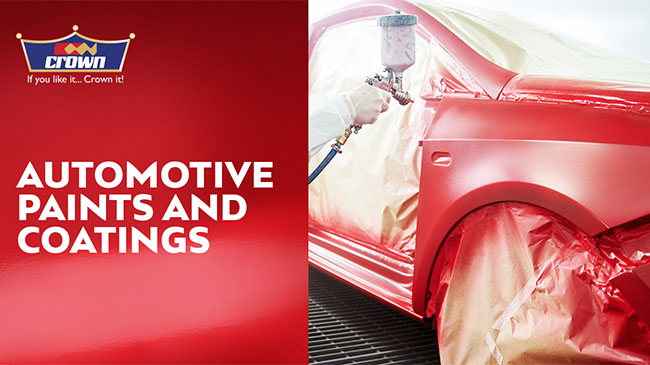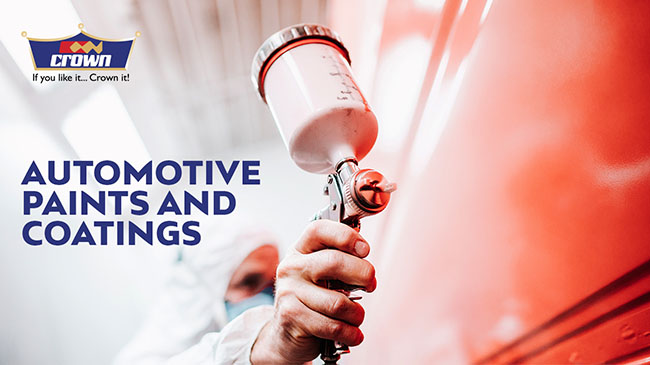
You’re driving around town, and everyone seems to be giving your car a staring gaze, first reaction would be to ask yourself ” are my Tires, ok? OR has my bumper come off?” We frequently forget to appreciate the true beauty that comes with a well-done paint job. This leads us to ask some simple questions, when was the last time you thought about your car paint? Have you ever had your car repainted? Automotive paint is meant to be on a car’s body for a lifetime… Just about!
Crown automotive paint, unlike generic paint, is made from a highly researched formulation consisting of polyurethane and acrylic enamels designed to protect vehicles from environmental damages and providing prolonged aesthetic look.
COMPOSITION OF AUTOMOTIVE PAINT
The four major components of automotive paints are as follows.
•Pigment: Stable and non-fading component that gives color to the paint
•Thinner: Solvent that keeps the paint in its liquid form
•Binder: A dispersion solution that holds pigments together and provides adhesion to surfaces.
CLASSIFICATION OF AUTOMOTIVE PAINTS
Automotive paints formula can either be a water-based polyurethane, lacquer, or acrylic enamel. These are majorly classified based of intended type of finish.
1.Solid paints- consist mainly of flat pigments but do not have any visual enhancers. Easy to apply and repaint in case of any damage
2.Metallic colors- paint that consist of aluminum powder dispersed into flat paint to enhance its luster and shimmering when viewed at different angles
3.Pearlescent paint- consists of ceramic crystals or mica dispersed into flat paint to impart a pearl-like finish. Produces a multi-colored sheen when viewed at different angles
4.Matte paint- Flat paint that is not reflective. Has no sheen
PAINTING PROCESS
Car painting process occurs through the following stages.
1.Surface Preparation
Thorough cleaning of surfaces to get rid of contaminants like oil, grease, inks, chalks, and rust. Preparation therefore involves washing the panels with high pressure juts, using commercial degreasers to remove grease and rust removers.
2.Applying the Primer
After application of rust inhibition layer, a primmer is applied to, overcome surface imperfections and, make it conducive to receive paint.
3.Applying the Base coat
There are 3 types of base coats: Solid, metallic and pearlescent. They differ on basis of paint quality; solid coats do not sparkle while metallic coats glitter. This is the stage where visual properties come into play.
4.Applying the Clear coat
This is a chemical and UV resistant clear lacquer that is applied on top of base coats. The clear dries into a glossy finish thereby making base coat color to stand out.
To learn more on the different automotive paints and coating please visit Crown Paints online Shop







